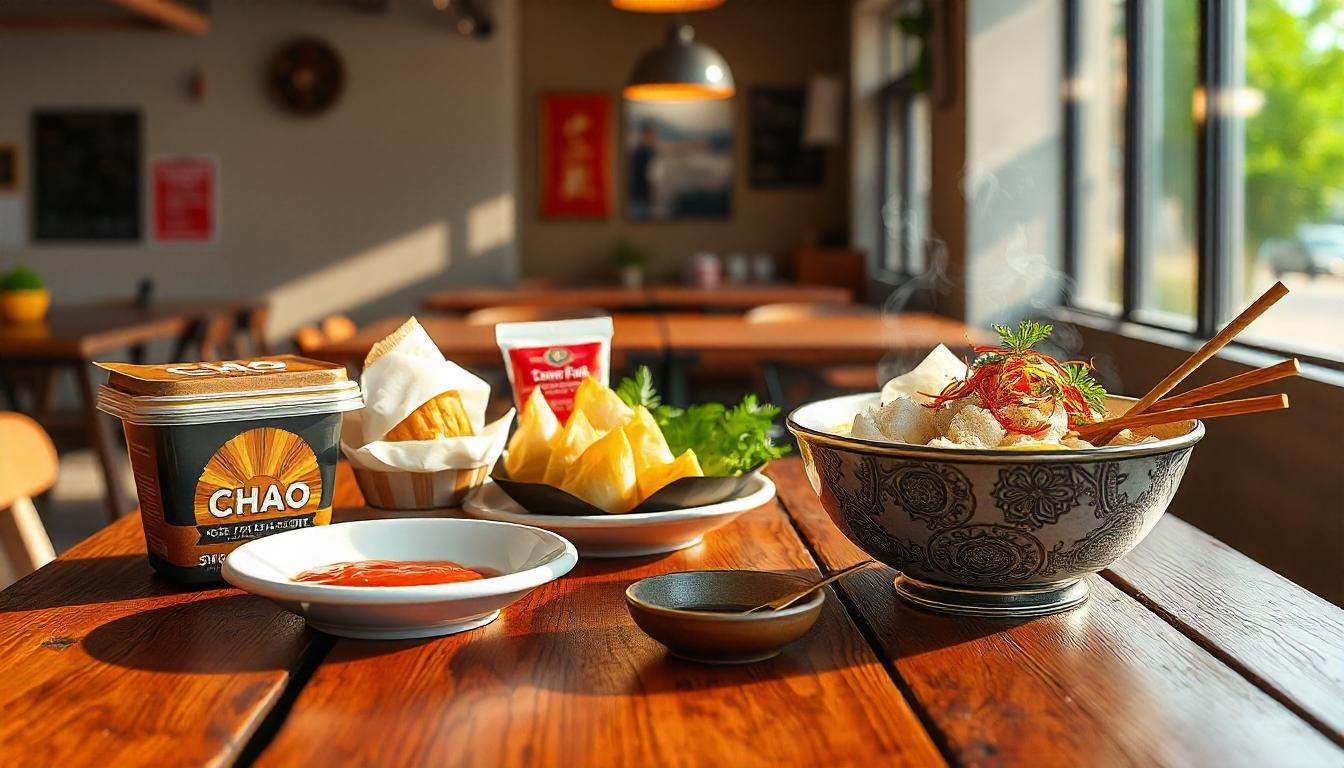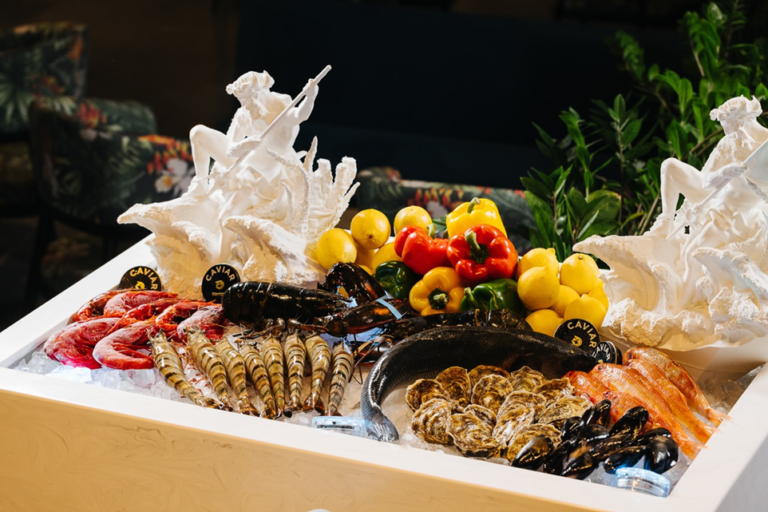Bridging Culinary Delights: Fast Food Efficiency Meets Traditional Filipino Heritage
In today’s busy urban environment, many Filipinos find themselves torn between the demands of a fast-paced lifestyle and the desire for meals that connect them with their cultural roots. The pressures of work and the rush of daily life often lead to choosing convenience over tradition, leaving many yearning for the authentic flavors of home-cooked Filipino dishes.
The solution to this culinary conundrum lies in embracing both modern efficiency and time-honored traditions. More and more, food enthusiasts are exploring dining experiences that deliver quick service without sacrificing the rich taste of heritage. For those seeking a true blend of convenience and authenticity, discover the unique offerings at Ambers.
The Changing Face of Filipino Dining
The culinary landscape in the Philippines has transformed significantly in recent decades. Urbanization and evolving work patterns have given rise to a thriving fast-food industry that caters to busy lifestyles. Fast-food chains offer a quick solution to hunger without compromising quality, yet many still crave the comfort of traditional Filipino cuisine that has been passed down through generations.
Modern diners now seek a harmonious blend of convenience and culture. They desire meals that not only satisfy their immediate hunger but also evoke the familiar, cherished flavors of home. This growing demand has inspired a new wave of culinary innovation, where the best of modern fast-food efficiency meets the soulful taste of classic recipes.
The Fast-Food Revolution: Efficiency and Innovation
Fast food has become a cornerstone of the modern dining experience. Outlets such as Chowking have perfected the art of delivering quality meals in a matter of minutes. Their menus are designed to meet the needs of busy individuals, offering dishes that are both flavorful and practical.
At these fast-food establishments, dishes like Chao Fan, a savory fried rice mixed with meats and vegetables, and Siomai, the well-loved steamed dumplings, serve as staples for many Filipinos. Items such as Wonton Mami, a comforting noodle soup, also highlight the ability to prepare meals quickly while retaining the rich flavors that customers have come to expect.
This commitment to speed and quality has redefined how many view dining in the Philippines. Fast-food options provide not only efficiency but also a consistent and satisfying taste that appeals to people from all walks of life.
Rediscovering the Heart of Filipino Cuisine
While fast food offers undeniable convenience, there remains an enduring appreciation for traditional Filipino dishes. These recipes are much more than food; they are a living legacy of culture, family traditions, and local ingredients that have been cherished over generations. The familiar aromas and tastes evoke memories of home and bring a sense of comfort and belonging.
Local eateries and specialized menus have taken on the role of preserving these authentic recipes. Chefs are reintroducing traditional cooking methods to modern kitchens, ensuring that the classic flavors of Filipino cuisine continue to thrive. This effort not only keeps the culinary heritage alive but also allows younger generations to experience the rich tastes that define their culture.
Signature Dishes and Culinary Narratives
Fast-Food Favorites That Energize
The fast-food sector has carved a niche by delivering meals that are both accessible and satisfying. Dishes such as Chao Fan offer a delightful combination of savory flavors and convenience, making them a popular choice among urban dwellers. Siomai, with its tender meat filling, provides a quick yet satisfying bite that resonates with the modern appetite.
Another standout is Wonton Mami. This noodle soup, rich in both flavor and texture, is a favorite for those looking for a warm and hearty meal on busy days. These fast-food selections are a testament to the adaptability of Filipino cuisine, successfully merging traditional flavors with the demands of a modern lifestyle.
Embracing Authentic Flavors
For those who long for a deeper connection with Filipino heritage, traditional dishes offer a window into the country’s rich culinary past. Among the many beloved recipes, one dish stands out for its distinctive taste and cultural significance. The Lomi Special is renowned for its thick, savory broth and perfectly tender noodles. This noodle soup captures the essence of Filipino comfort food by combining local ingredients in a way that honors both tradition and innovation.
The careful preparation of the Lomi Special involves techniques that have been refined over many years. Each spoonful is a celebration of heritage, inviting diners to savor the layers of flavor that speak of home and history. The dish is an exemplary reminder that traditional recipes can evolve without losing their soul.
A Fusion of Modern Efficiency and Traditional Charm
The beauty of the contemporary Filipino dining scene lies in its ability to unite the fast and the familiar. Fast-food establishments provide the quick service that modern life demands, while traditional eateries offer the depth and comfort that remind us of our cultural roots. Together, they create a balanced dining experience that caters to both practical needs and emotional cravings.
Many Filipinos now adopt a flexible approach to their meals. They might grab a fast, energizing bite during the day and later sit down for a relaxed dinner filled with traditional dishes that spark memories and celebrate family values. This fusion of styles not only enriches the overall culinary experience but also highlights the dynamic nature of Filipino food culture.
The Role of Culinary Collaborations
Collaborative efforts between modern fast-food chains and traditional eateries have become more common. These partnerships provide diners with a unique opportunity to enjoy a variety of culinary experiences in one setting. By combining the speed and efficiency of fast food with the rich, authentic flavors of traditional recipes, such collaborations broaden the appeal of Filipino cuisine.
These joint ventures also contribute to preserving culinary heritage. They create platforms where chefs and restaurateurs can experiment with traditional dishes while adapting them to the needs of today’s consumer. This creative dialogue fosters an environment where both modern and classic recipes can thrive together, ensuring that the legacy of Filipino cuisine is passed on to future generations.
Embracing the Future of Filipino Cuisine
The future of dining in the Philippines is bright, marked by a seamless integration of efficiency and authenticity. Consumers are increasingly looking for meals that provide the speed they need without compromising the depth of flavor and cultural significance. This trend is driving innovations in both fast-food and traditional culinary practices, leading to exciting new dining experiences.
The next generation of Filipino diners is expected to be adventurous, exploring a wide range of options that honor both tradition and modernity. Technological advancements, such as online ordering and smart kitchen appliances, are also playing a role in enhancing the overall dining experience. These innovations streamline meal preparation and delivery, making it easier for people to enjoy both fast food and time-tested recipes.
As culinary traditions continue to evolve, the fusion of modern efficiency with traditional charm is set to redefine Filipino cuisine. The dynamic interplay between these two elements promises a future where every meal is an opportunity to celebrate the best of both worlds, enriching our lives with flavors that are as diverse as they are delicious.
Conclusion
The evolving culinary scene in the Philippines is a celebration of both modern efficiency and traditional authenticity. Fast food has revolutionized the way we dine by offering quick and satisfying meals, while traditional dishes continue to evoke the warmth and heritage of Filipino culture. By embracing both these dining experiences, we can enjoy a diverse and enriching gastronomic journey.
Whether you opt for the convenience of a fast-food meal or the soulful comfort of a traditional dish, each choice contributes to the vibrant tapestry of Filipino cuisine. As we look forward to a future where these two culinary worlds coexist harmoniously, let us celebrate the unique flavors that make every meal a cherished experience.







